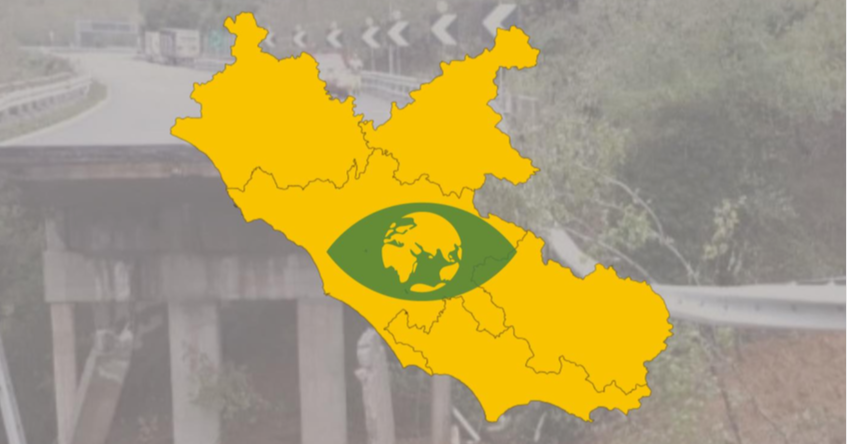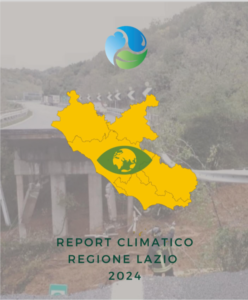Climate change in Lazio: rising temperatures and decreasing rainfall trends

The Lazio region towards increasingly warmer temperatures and a decrease in rainfall due to the effects of climate change
The Center for Climate Change Studies by Greenway and Ecogest presents the data and forecasts for the coming years
Climate in Lazio in the next decades will be characterized by a rise in temperature and a decrease in precipitation, along with a simultaneous increase in extreme rainfall events, putting the region at risk of drought and destructive events.
The projections for the future show a general increase in the average temperature, with an increase of up to 1.9°C by 2050. This value coincides with what is expected for the central Italy macro-zone. The scenario that emerges in the next 25/30 years shows a general decrease in periods with very cold days, i.e., with maximum and minimum temperatures below 0°C, and an increase in periods with high temperatures, characterized by heat waves and tropical nights, significantly increasing throughout the region, with frequency percentages higher than those expected for the entire central Italy area.
These are some of the data elaborated by the Center for Climate Change Studies, promoted by Greenway Group Srl and Ecogest Spa, which recently published the Climate Report of the Lazio Region. The report follows a series of other regional studies that the CSCC has recently produced, covering a large part of the national territory, as well as the entire Mediterranean area, and published for the benefit of the competent territorial authorities

The analysis of the indicators considered for intense precipitation shows a general increase in maximum daily precipitation and extreme precipitation events (99th percentile of precipitation), with a differentiation between coastal areas, where the intensity of phenomena is growing, and inland areas where it is decreasing. Concerning the phenomenon of drought, a slight increase in the consecutive days of occurrence is expected.
In this context, it is also possible to assess the risk of extreme hydrogeological phenomena such as landslides. In Lazio, 5.4% of the region’s territory is in high/very high risk scenarios. This corresponds to flood-prone areas following flood events, which are expected to cover 2.5% of the regional territory at high risk, with an extension of approximately 442.498 km2.
All this also involves an evolution of agricultural crops, for which projections show that corn and tomatoes will be among the few cultivations that will better adapt to the new climatic scenarios.
Regarding the city of Rome, in particular, the study shows an increase in the average temperature in the summer season, with +6°C over a 100-year period, and in autumn, with +5°C using the same scale, as well as a significant increase in the number of hot days.
“Our study – declares Valerio Molinari, president of CSCC and reference shareholder of Ecogest Spa, co-founder of the Center for Climate Change Studies – aims to provide useful data to guide future infrastructure and maintenance choices both at a central and peripheral level, in support of the strategic decisions of the competent administrations, and also to give due weight to the consequences of a progressive and unstoppable phenomenon such as climate change. Temperature is the climatic parameter that most clearly shows climate changes in the Lazio region, with a significant increase expected in the next 30 years. It is necessary to move from diagnosis to treatment quickly through scientific and technical innovation, and, above all, relying on the experience and know-how of those who have long recognized the risks inherent in these changes, studying not only their effects but also effective solutions for a global emergency of such magnitude – concludes Molinari”.
The effects of climate change are becoming increasingly evident and significantly impact our lives. Among the most affected sectors, undoubtedly, is that of transport infrastructure.
A CONCRETE ACTION: MAINTENANCE OF INFRASTRUCTURES
From the evidence of the numbers just mentioned, it is clear that the maintenance of infrastructure networks is fundamental when it comes to road infrastructure and their ability to be resilient to the effects of climate change.
“Solutions exist, and they are multiple – continues Valerio Molinari -. First of all, planning and remodelling maintenance by supporting it through solutions like online cameras, weather stations, road load sensors, advanced telematics systems capable of regulating traffic flow and avoiding congestion. Also important is the choice of new green facilities, which affects the state of conservation of road and highway infrastructures. Among the solutions, we could consider, for example, native plants and trees in new installations, rationalization and adaptation of maintenance intervention planning, application of new study and control technologies to green maintenance, starting from drones and continuous monitoring of vegetation status”.
© RIPRODUZIONE RISERVATA







